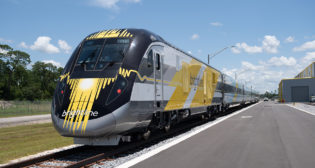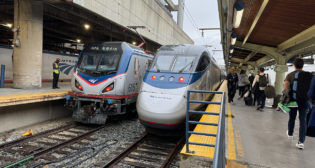
The public interest in continued rail service
Written by William C. Vantuono, Editor-in-ChiefIn Abraham Lincoln’s day, the Illinois Central line linking Chicago with Springfield, Ill., and St. Louis was preferred for passenger service because, of the five major lines that connected the two major Midwest cities, it offered the straightest, flattest, most direct route. Lincoln himself used it to travel from Springfield to Chicago.
And, according to Daniel R. Murray, “the timetables of that time show that a passenger could get from Springfield to Chicago over this line faster in Lincoln’s day than in ours.”
Who is Dan Murray, and why did he receive Railway Age’s W. Graham Claytor Jr. Award for Distinguished Service to Passenger Transportation? Murray is a prominent Chicago-based attorney, a senior partner in the law firm Jenner & Block and Chair of the firm’s Bankruptcy, Workout, and Corporate Reorganization Practice. In the late 1980s, he was named Trustee of the bankrupt Chicago, Missouri & Western Railway, a regional railroad that had acquired the Chicago-St. Louis-Kansas City line from the Illinois Central. Murray fought to keep the railroad, which hosted Amtrak service, operating “because of the public interest in continued rail service.” He managed to secure government funding by working closely with then-Illinois Governor Jim Thompson, U.S. Sen. Paul Simon, and U.S. Rep. (now Sen.) Dick Durbin.
In 1990, the Gateway Western Railway Company acquired the St. Louis-Kansas City portion of the railroad, and the Southern Pacific acquired the Chicago-St. Louis portion. Today, owned and operated by Union Pacific (which acquired the SP in 1995), the Chicago-St. Louis line is well on its way to becoming a higher-speed (or high-performance) passenger rail line, with 110-mph Amtrak trains sharing the right-of-way with UP freights.
It is largely through Dan Murray’s diligence, and his strong belief in rail service, that Chicago-St. Louis HrSR is coming to fruition. As he is is quick to point out, there were many others involved in keeping the railroad operating during its darkest days. Among them were Conrail President and Chief Operating Officer Ron Batory, who was Executive VP and COO of the CM&W; the UTU’s Chuck Downey and Pat Simmons; Murray’s then-partner at Jenner & Block, Randy Mehrberg, who negotiated the sale of the railroad to the SP and the Gateway Western; and Judge John D. Schwartz, the chief judge of the bankruptcy court in Chicago, “who quickly came to the conviction that the continued operation of this rail line, from both a freight and passenger perspective, was in the public interest.”
“In my view, there are two valuable lessons that come out of this story,” Murray told delegates to Railway Age’s 18th Annual Passenger Trains on Freight Railroads Conference. “The first is that there is a vital public interest in continued passenger rail service, and that this interest can only be served with substantial support from the government—private enterprise has neither the incentive nor the disposition to do so. The freight railroads that host passenger trains are not subsidized by the government; they are the only form of transportation not supported by the government—unlike highway or air transportation, which enjoy their own very substantial hidden government subsidies. Government backing for rail can only be secured if there is strong public support. So it is incumbent upon us to muster that public support.”
“The second lesson,” Murray said, “is that preserving essential passenger rail service in this country requires teamwork—as we saw in the Chicago Missouri & Western story among heroes who were not afraid to cross party lines, labor-management lines, and the federal/state divide.”



